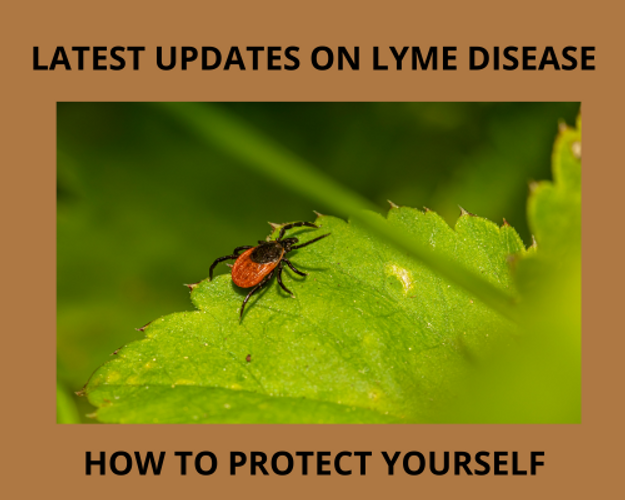Why 2025 Could Be One of the Worst Years Yet for Ticks and Lyme Disease: What You Need to Know
Apr 12th 2025
Tick Season 2025 Forecast: Why This Year Could Be the Worst for Lyme Disease Yet

As 2025 unfolds, health experts, entomologists, and climate researchers are raising the alarm: this year is expected to bring a significant surge in tick activity and Lyme disease cases across the United States. From shifting weather patterns to expanding tick habitats and rising infection rates, the risks are real and growing.
In this in-depth guide, you’ll learn what makes 2025 so dangerous, how to protect yourself and your family, the early symptoms of Lyme disease, and answers to questions many consumers can’t find elsewhere.
Why 2025 Will Be a Record Year for Ticks & Lyme Disease
Warmer Winters and Wetter Springs
Thanks to climate change, ticks are surviving winter in greater numbers. Mild winters mean ticks don’t die off as they used to, and wet springs offer the ideal humidity and vegetation for ticks to thrive and find new hosts.
Longer Tick Season
Ticks are now active from early spring well into late fall. Some regions may experience tick activity year-round, especially in the Southeast and coastal states.
High Infection Rates Among Ticks
A 2025 report from Dartmouth College shows that in parts of the Northeast, 50% of adult blacklegged ticks (deer ticks) carry the Lyme-causing bacterium Borrelia burgdorferi. That’s an alarmingly high infection rate that makes every bite more dangerous.
Tick Migration & Geographic Expansion
Ticks are spreading to regions where they were previously uncommon. Warmer temperatures have pushed blacklegged ticks into the Upper Midwest, Pacific Northwest, and higher elevations in the South. Areas once considered low-risk are now reporting cases.
More People Outdoors
More Americans are hiking, camping, and gardening than ever. The increase in outdoor recreation, paired with low public awareness in newly affected regions, means higher exposure risk.
FAQs:
Can one tick bite give me Lyme disease?
Yes—especially if it’s a blacklegged tick attached for more than 24 hours. In high-risk areas, the odds of infection are significant. Always remove ticks promptly and save the tick for identification.
Why do some people get Lyme disease while others don’t?
Risk depends on:
-
The tick species and life stage
-
Duration of attachment
-
Whether the tick was infected
-
Your immune response
What are the first symptoms of Lyme disease?
-
Bull’s-eye rash (erythema migrans)
-
Fever, chills, and fatigue
-
Joint and muscle pain
-
Headache and neck stiffness
What should I do if bitten by a tick?
-
Remove it with tweezers
-
Clean the bite area
-
Save the tick in a bag or container
-
Monitor for symptoms
-
Contact your doctor, especially if symptoms appear
Do herbal remedies help with Lyme?
Some herbs—like Japanese Knotweed, Cat’s Claw, Andrographis, and Astragalus—are used in holistic protocols (e.g., Buhner Protocol). While they may support immunity, they should not replace antibiotics or medical care.
| Herb | Purpose | Notes |
|---|---|---|
| Japanese Knotweed | Antibacterial, immune support | Key herb in Buhner Protocol |
| Cat’s Claw | Inflammation reduction | May cause allergic reactions in some people |
| Andrographis | Immune modulation | Known for bitter taste and immune support |
| Astragalus | Preventive immune tonic | Use early; not during active infection |
Can pets bring ticks indoors?
Yes. Pets can carry ticks in their fur. Always check them after walks and use veterinarian-recommended flea/tick preventatives.
Is there a Lyme disease vaccine yet?
Not yet, but one is in Phase 3 trials as of 2025 by Pfizer and Valneva, targeting multiple North American strains.
What You Can Do to Stay Safe in 2025
-
Dress smart: Wear long sleeves and pants tucked into socks.
-
Use repellents: Choose EPA-approved options like DEET, picaridin, or oil of lemon eucalyptus.
-
Shower & inspect: Within 2 hours of outdoor activity, shower and check yourself and children.
-
Check pets: Look for ticks around ears, belly, and paws.
-
Landscaping: Keep lawns trimmed, remove leaf litter, and create a mulch or stone barrier between woods and grass.
-
Tick tubes: Use permethrin-treated cotton tubes around your yard to reduce tick populations.
This file is a work of the Centers for Disease Control and Prevention, part of the United States Department of Health and Human Services, taken or made as part of an employee's official duties. As a work of the U.S. federal government, the file is in the public domain.
Bonus: Lyme Disease Risk Map 2025
-
Northeast: Extremely high
-
Midwest: High
-
Pacific Northwest: Emerging risk
-
Southeast: Moderate to high
-
Southwest: Low to moderate (rising)
What NOT to Do
-
Don’t burn the tick or apply petroleum jelly
-
Don’t ignore symptoms
-
Don’t assume you’re safe because you’re not in a “risky” area
Final Thoughts: Be Prepared, Not Paranoid
2025 may be one of the toughest years yet for tick-borne illness, but with the right information and habits, you can stay safe. Whether you’re deep in tick country or just starting to see cases in your area, prevention is your best protection.
The best way to fight Lyme disease? Prevent the bite.
Sources: CDC, Pfizer Trials, Dartmouth College Study, NIH, Journal of Medical Entomology
Author: Sarah. Holistic Health, Herbal Practitioner
Published: April 2025



